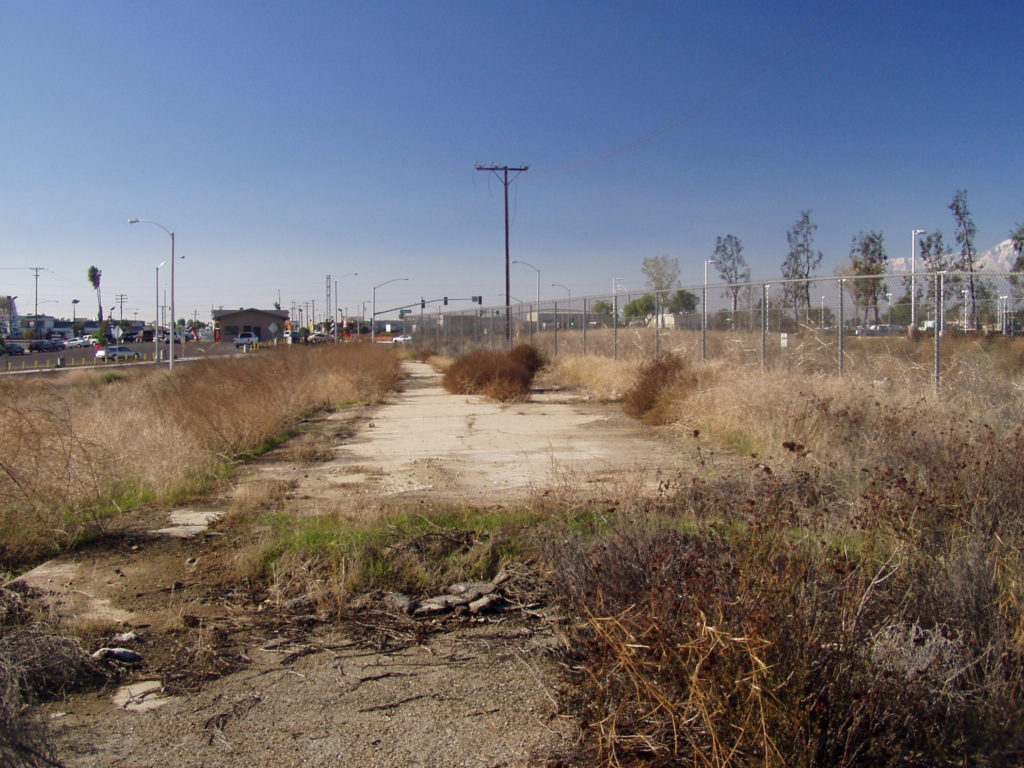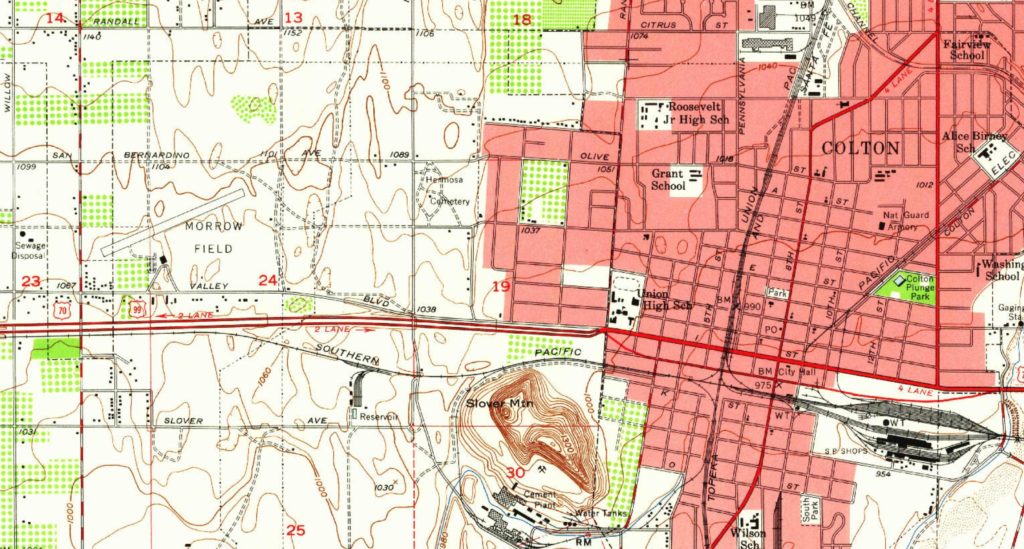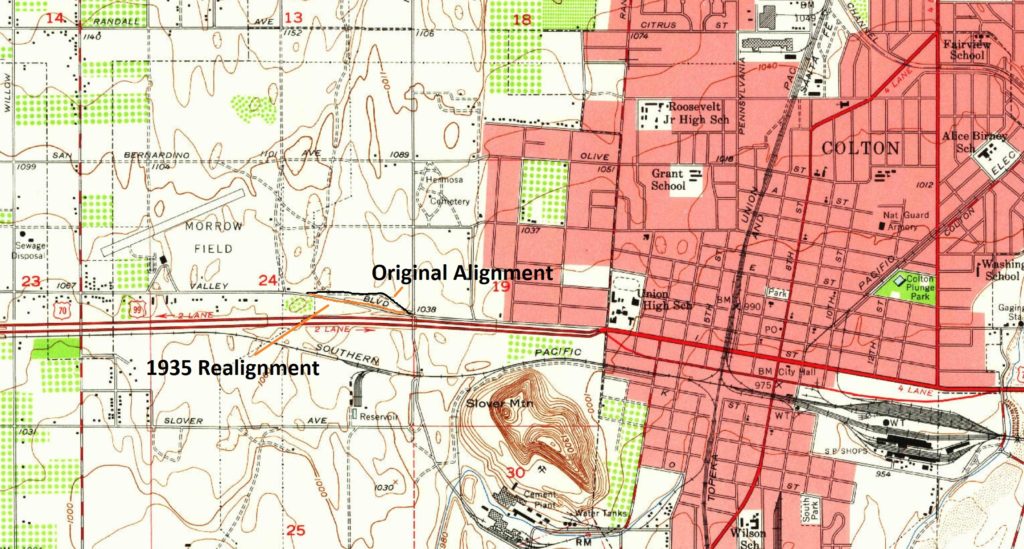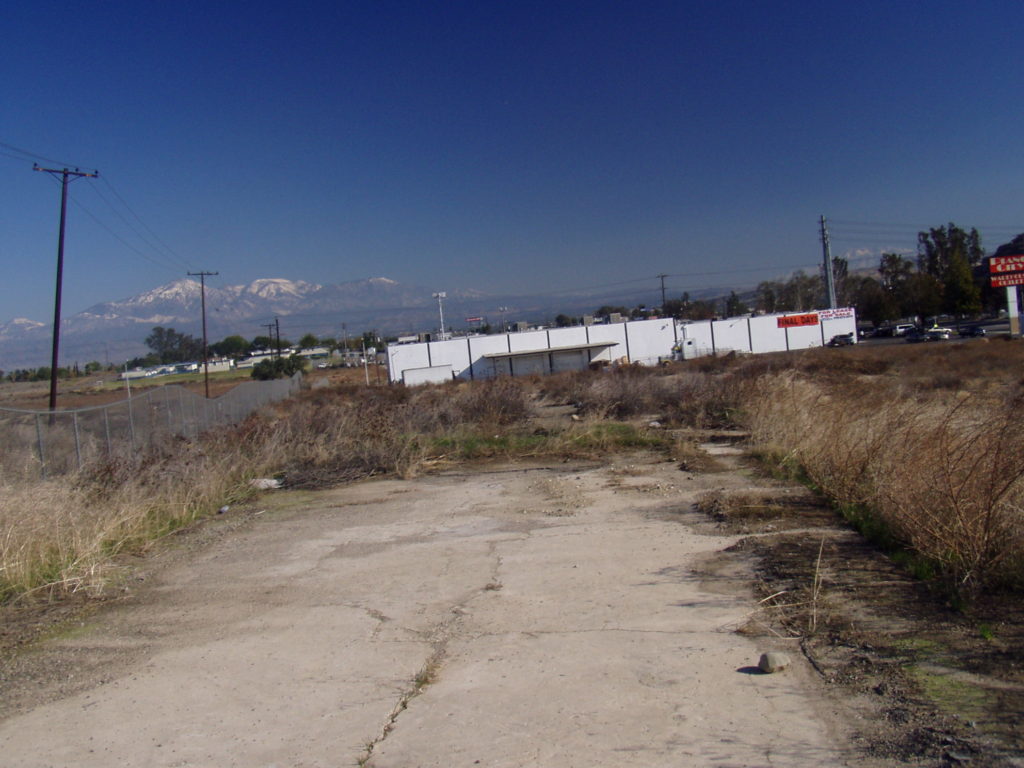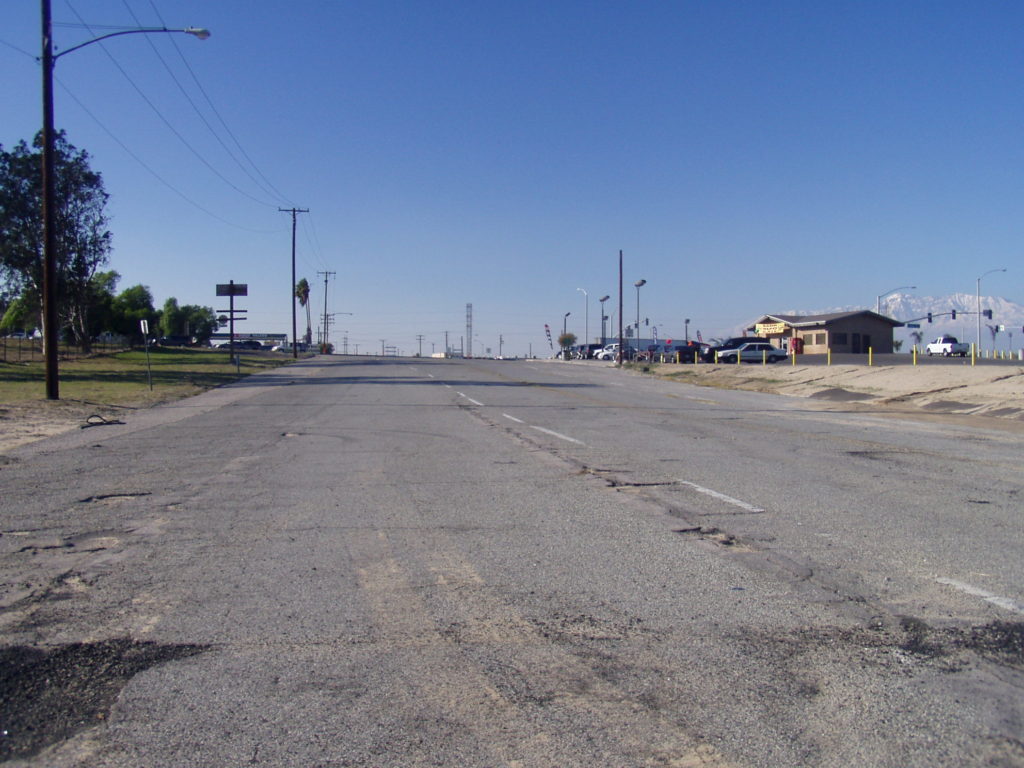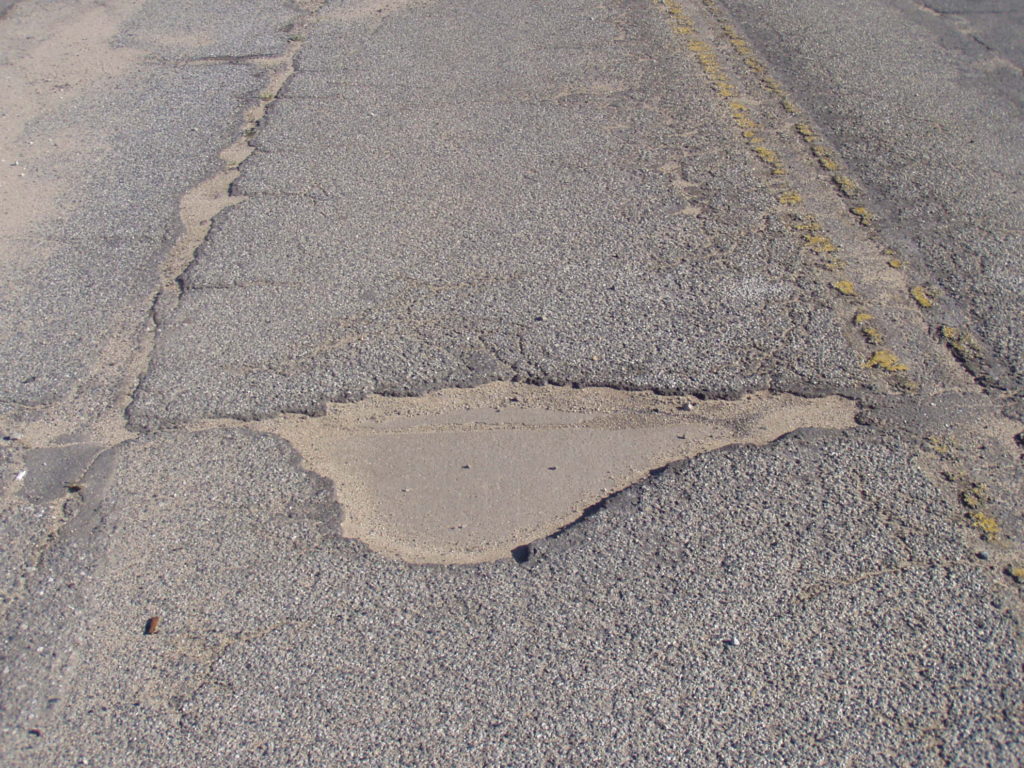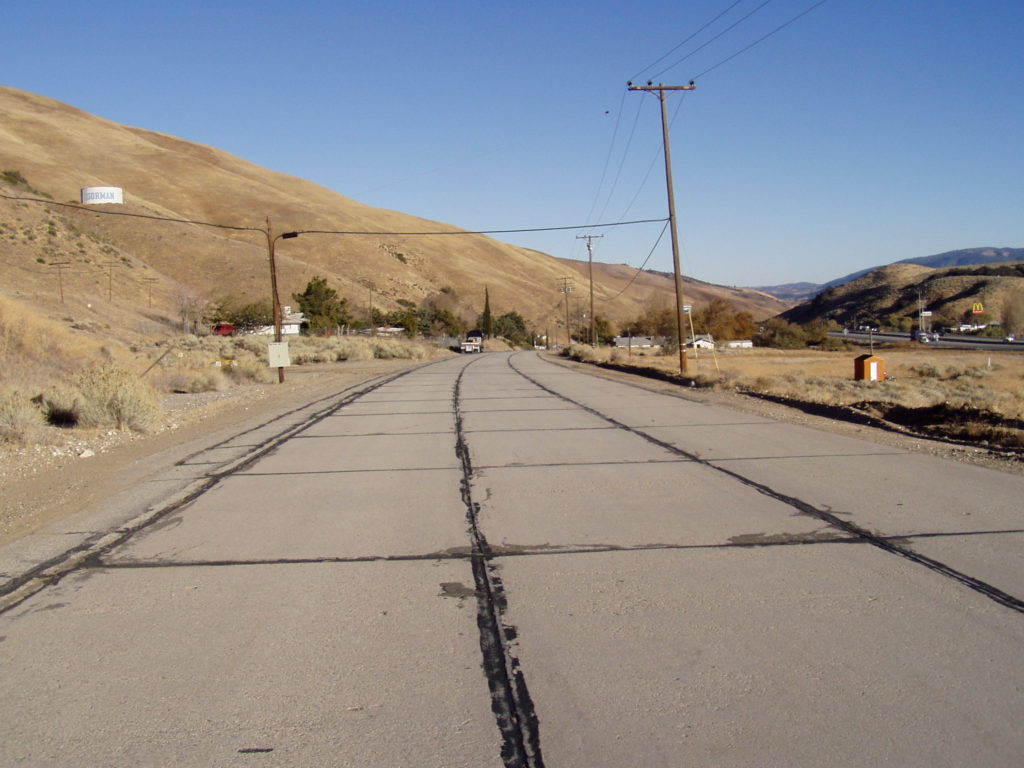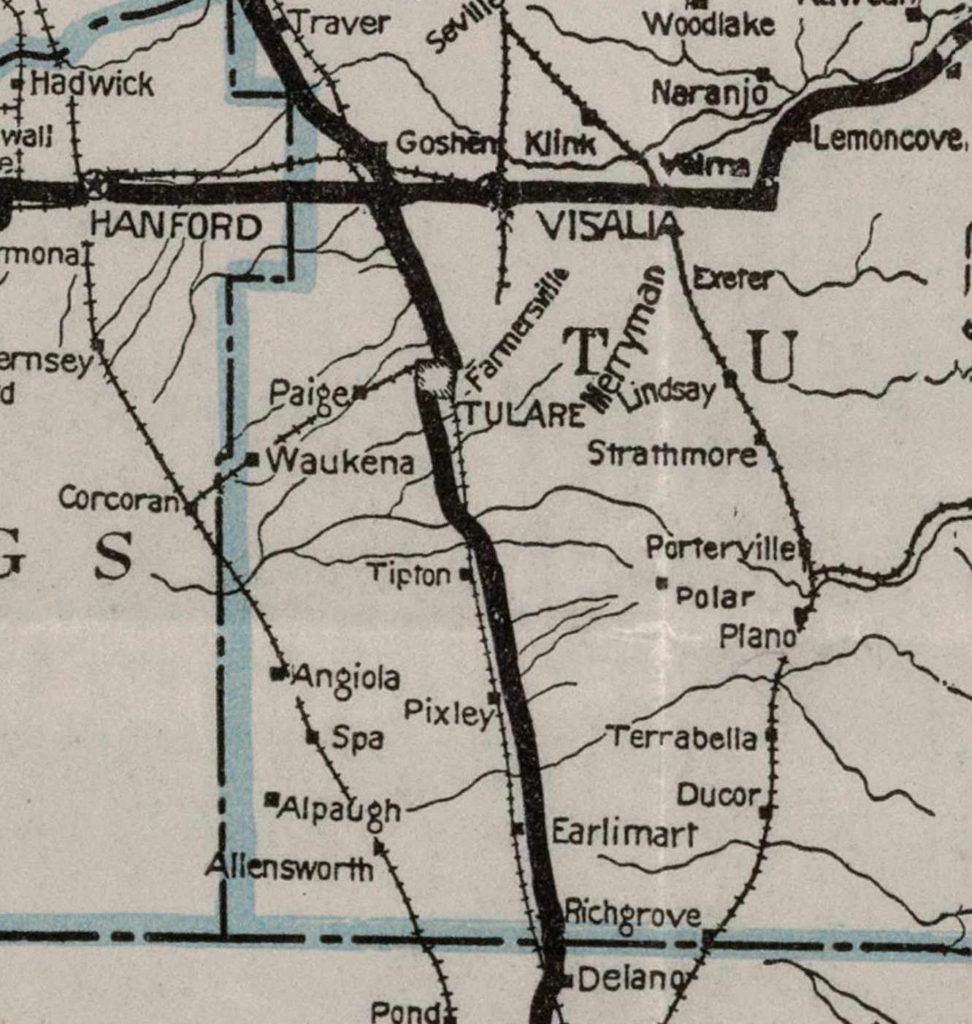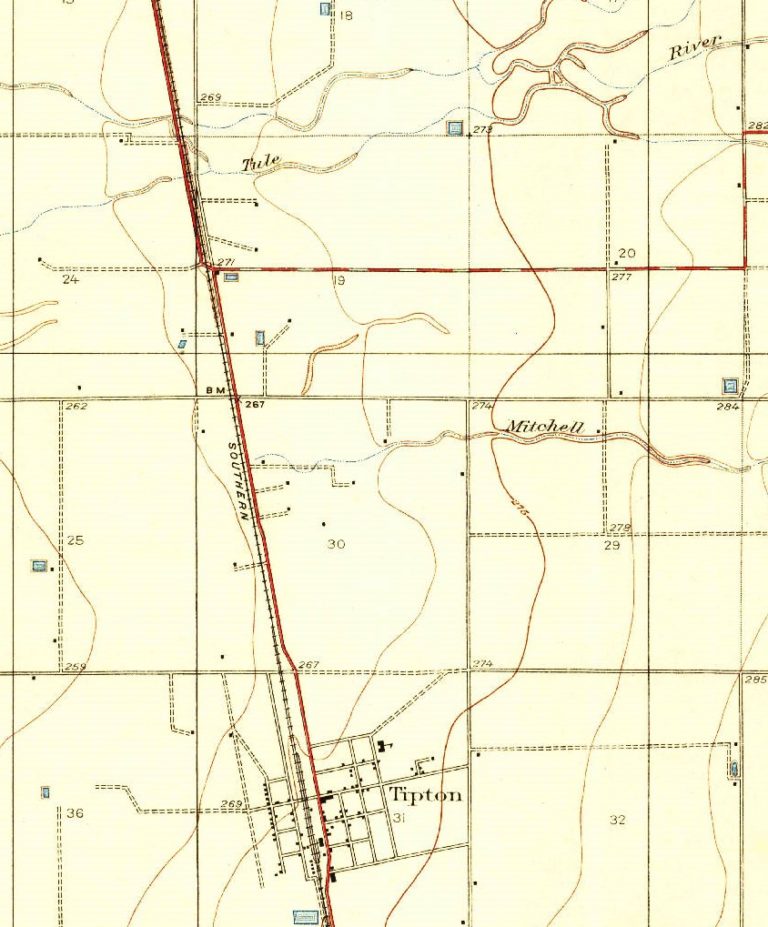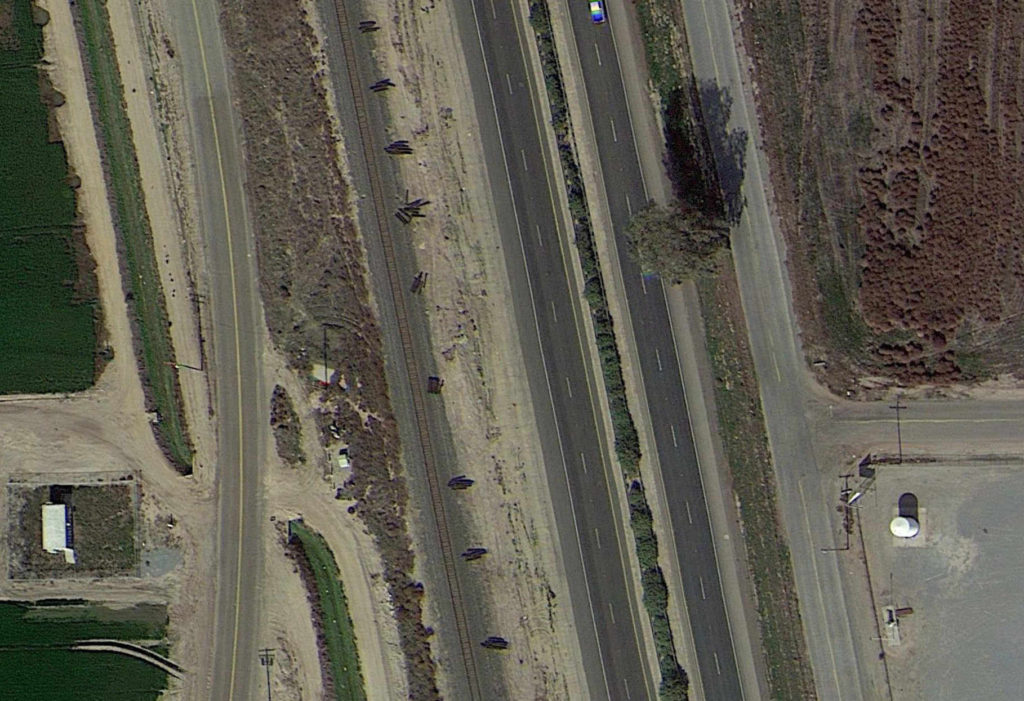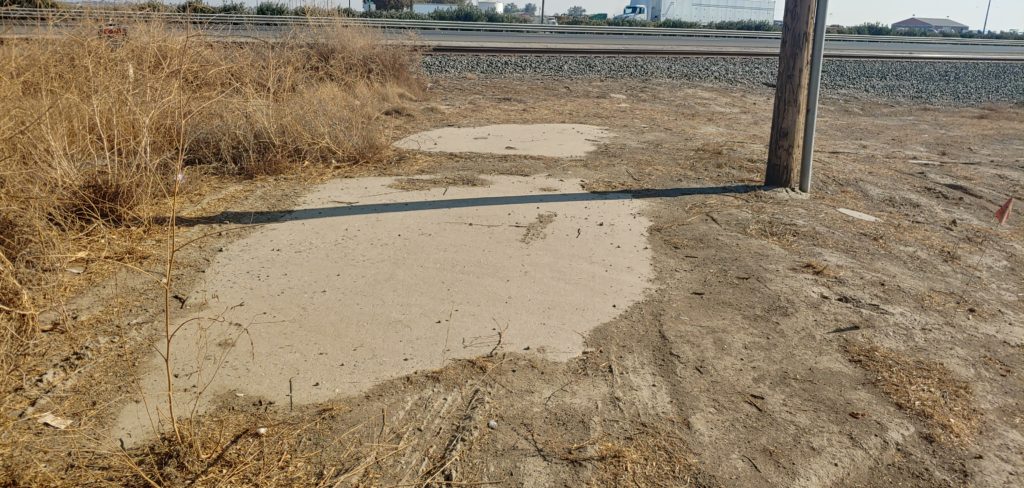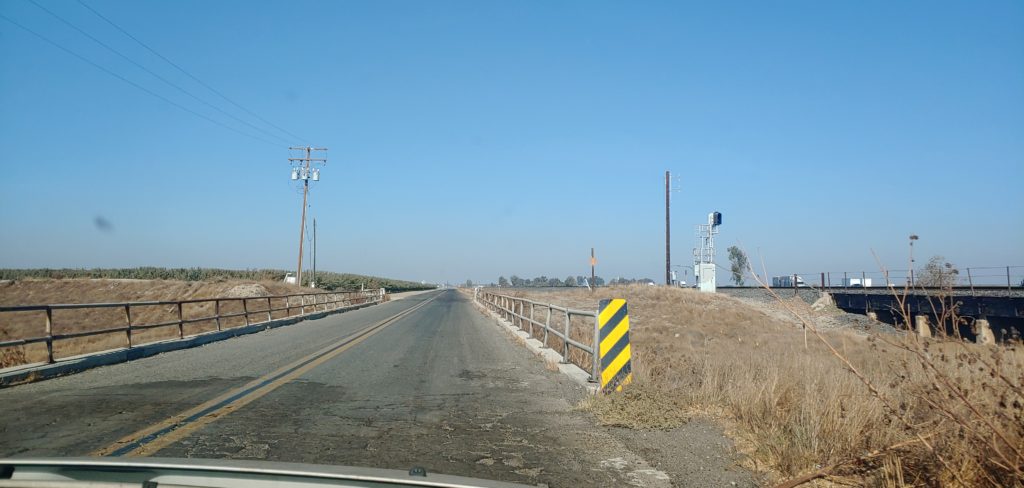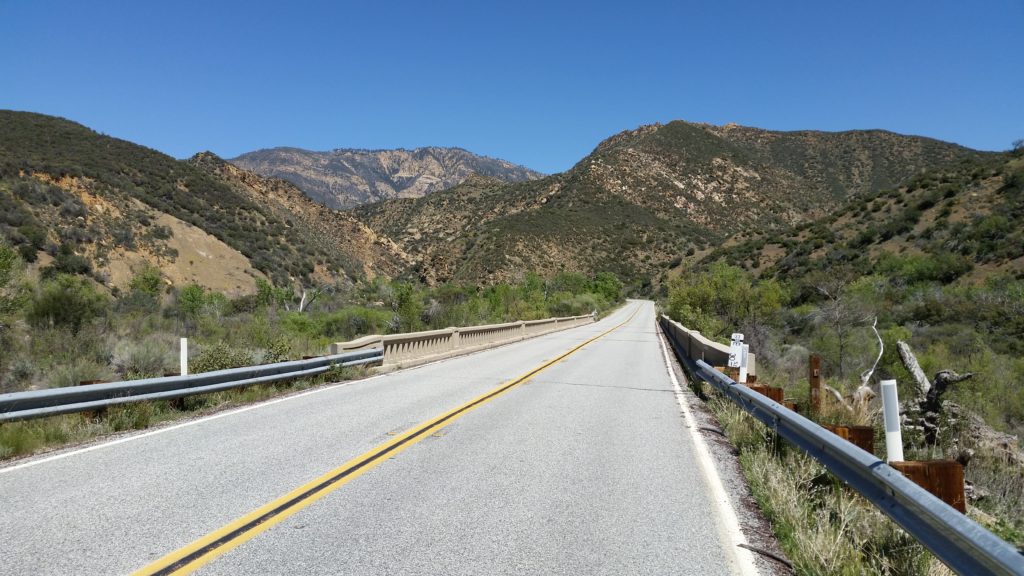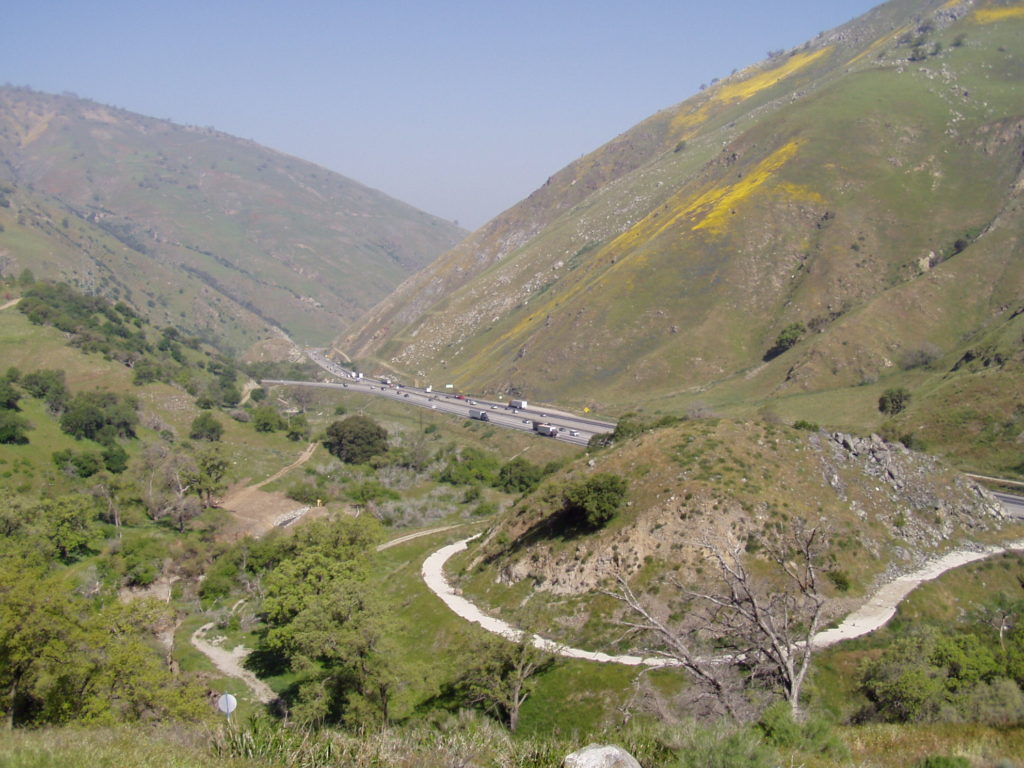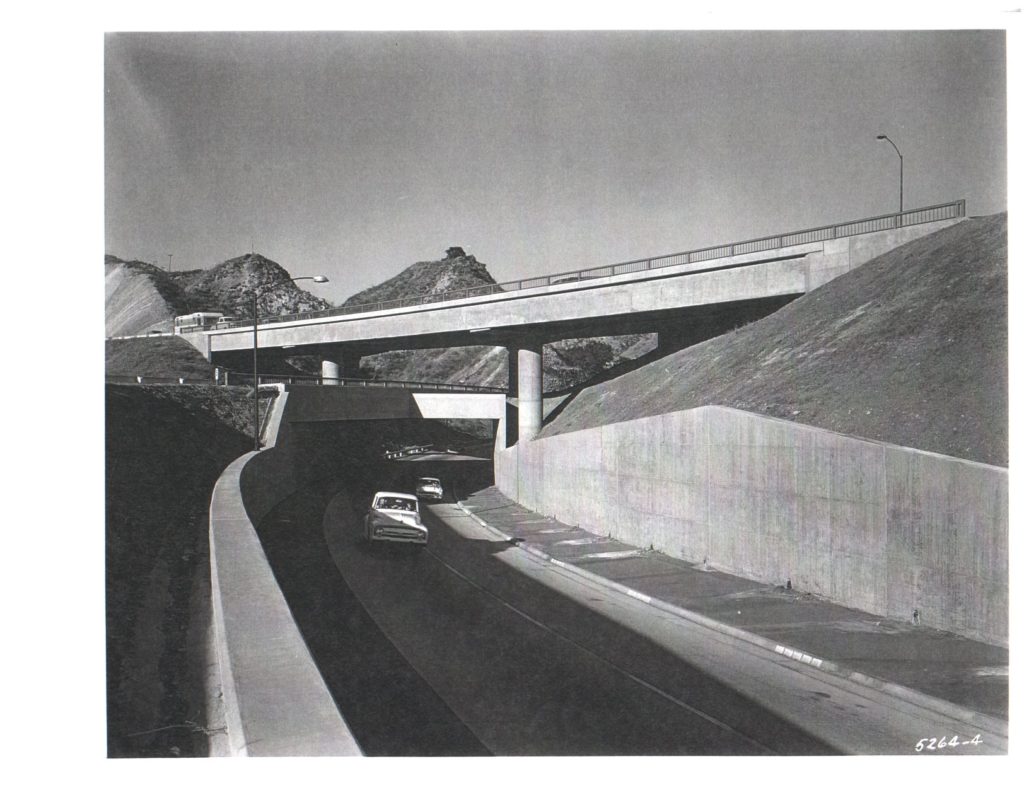US 99 in Colton, California
by Michael F Ballard
A small section of original paving, dating to the late 1910’s is still visible near the intersection of Valley Blvd and Pepper Ave. This section of US 99 was realigned in 1935 to create a gentler curve along with a wider roadway. Little remains of the original paving of US 99 through the Los Angeles area, so this is a special section. In 2008, Valley Blvd was realigned again to the north, obliterating a section of the paving.

September Meeting
Join Michael F Ballard and the Historic Highway 99 Association of California for a presentation on the history of US 99 and the Newhall Pass on September 14, 2021 at 6pm via Zoom. The history of the roadway will be covered from the Newhall Tunnel in 1910 to the HOV ramp at the I-5 / State 14 interchange in 2012. Q&A to follow the presentation. Please register using the link below.
https://us06web.zoom.us/meeting/register/tZcrc–rpzIoGdxQYOYkViOpSZQHqw2rEpl1
Featured Website
Jeremy M. Tuggle, born in Redding, is a descendant of 11 pioneer families who settled Shasta County between 1849-1889. Jeremy attended Shasta College and is the author of two published books, Rooted in Shasta County (2003), and A Journey Through Time: Ono and the Bald Hills (2008), as well as various articles on local history. In 2017, Tuggle was awarded a Community Service Award, a prestigious national award for community service in historic preservation, by the Major Pierson B. Reading Chapter of the National Society of the Daughters of the American Revolution. Jeremy is a member of the General Society of Mayflower Descendants in the State of California, and an Eagle Scout.
Tuggle has been employed at the Shasta Historical Society since November of 2009. In his present role as Education & Community Engagement Manager, Jeremy conducts research for the historical society’s programs and events, contributes to the Society’s social media presence, and ensures the highest quality guest and patron experience at the Society’s programs and community events and is available to community organizations to present programs about Shasta County history.
You can follow Jeremy Tuggle at:
https://exploringshastahistory.blogspot.com/
https://www.youtube.com/channel/UCWaOOvqGzR_kkhhgPI5cPRA
Facebook, Instagram, Twitter and Pinterest.
Book of the Month
My name is Mike Herman and I would like to thank Michael Ballard for inviting me to send an article on a book that I have written.
In 2018, I started the Historic Ukiah-Tahoe Highway Assoc in an attempt to inform more people about the history and importance of this 222 mile Historic Highway running from Ukiah to Lake Tahoe. As part of this process, I wrote the Historic Ukiah-Tahoe Highway Travel Guide.
During the research of this project, I discovered another “Forgotten Highway”. In Williams, the Ukiah-Tahoe Highway crosses Old US 99W. After I finished the first Travel Guide, I started another one for Historic US 99W. I am sure that most of you know that US 99 splits into an east and west routes between Sacramento and Red Bluff. US 99W went through the small towns on the west side of the Sacramento Valley. US 99W was replaced in I-5 and is no longer a state or federal highway. Nearly every town along the way has an interesting story or a point of interest that people driving down I-5 will never know.
I provided Michael with an electronic copy of this Travel Guide that any member is welcome to use. If you would like to see the other Books and Travel Guides that we have, visit www.HistoricUSHighways.com
Featured Photo
This section of US 99 in Gorman, California was the last section of the original 1933 Ridge Route Alternate concrete. It was resurfaced in 2010 by Los Angeles County. The concrete was poured on June 8, 1933. It remained a part of US 99 until 1951, when Gorman was bypassed by a new four-lane alignment along what is now the I-5 freeway. Few sections of original three-lane concrete remain these days. Only two exist in Southern California now and both are on US 101 (Carpinteria and Mission Viejo). Always make sure to get your photos while you can. You never know when things might go away or be covered up.
Errata
Starting January 2022, this newsletter will shift to bi-monthly publication. Interim updates and 99 alerts will still be given outside of that schedule.

